British Penny coin history
A penny is a monetary unit originally equal to 1⁄240 (denoted d - from "denarius"), and currently 1⁄100 (denoted "p") pounds sterling.
The penny was first minted in the 8th century by King Gibert of Kent (764) and King Offa of Mercia (757-796), modeled on the silver Frankish silver denarius (denier) issued ten years earlier. On the obverse of the penny there was a chest-length portrait of the king, on the reverse - a cross with decorations.
Under King Edgar of England (957-975), the coinage of the common English penny began.
Until the 13th century, the penny remained the only coin in England.
In 1464, Edward IV reduced the silver content of coins by 20%: the weight of a penny dropped from 1 g to 0.8 g.
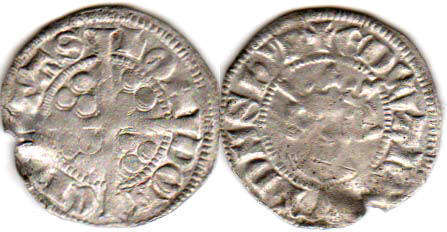
Penny of Edward I
In 1528, a new coin standard was introduced. Instead of the English Tower pound (weighing about 350 g), the international Troy pound (373.242 g) was introduced. The weight of a new penny (1/240 pound) would have been about 1.555 g., but in reality it was underestimated.
The quality of silver coins continued to decline - in the penny of Henry VIII (1509-1547), the silver content dropped to 333 fineness.
The weight also continued to decrease - the Queen Elizabeth (1558-1603) silver penny was a very small coin, weighing about 0.58g.
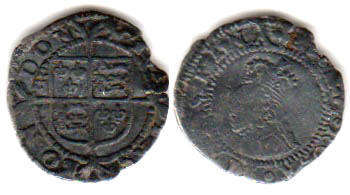 Penny of Elizabeth I
Penny of Elizabeth I
In 1664, the penny already weighed 0.5 g and had a diameter of 12 mm.
Beginning with King George II (1728–1760), the silver penny was minted only as part of a set of small silver coins (1d, 2d, 3d and 4d) for the Maundy Ceremony. This tradition continues to this day.
The first copper penny was issued in 1797 (although copper
farthings and halfpennies had been minted since 1672). This coin weighed 28.3 g and measured 36 mm. in diameter. The reverse showed a seated Britannia. Due to its large size, this penny was nicknamed the "cartwheel".
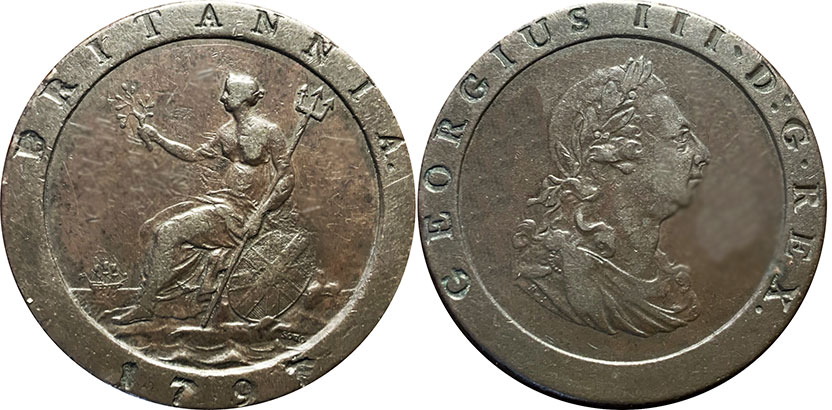
"Cartwheel" penny 1797 of George III
In 1806-1808, copper pennies of smaller weight (18.9 g) and diameter (34 mm) were produced.
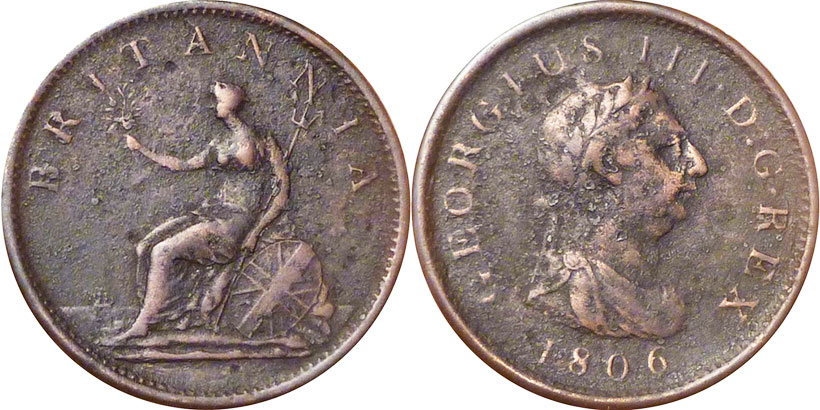
Penny 1806-1807 of George III
Since the reign of George IV, Britannia on the reverse has been turned not to the left, but to the right.
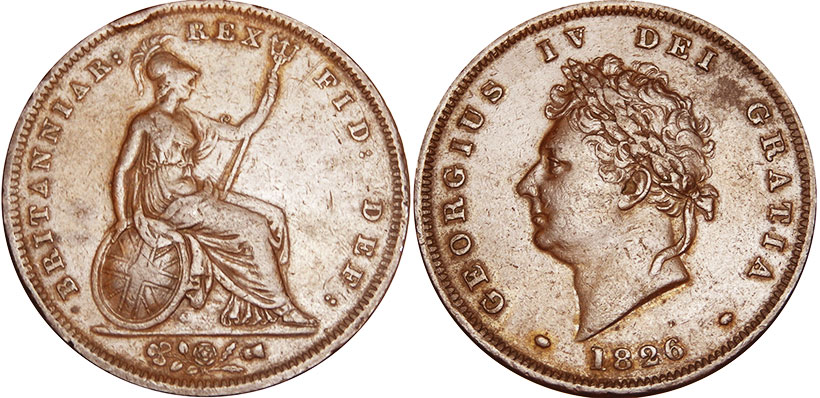
Penny 1825-1827 of George IV
Beginning in 1860, pennies were minted from bronze. The new coin weighed 9.4 g and had a diameter of 30.8 mm.
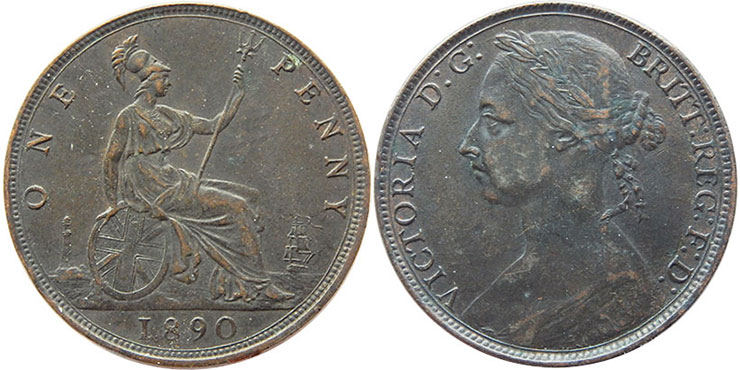
Penny 1874-1894 of Victoria
After the UK switched to a decimal coin system in February 1971, pennies were minted with a diameter of 20.32 mm. and weighing 3.56 g. On the reverse, instead of Britannia, a crowned portcullis was placed.
To emphasize the change in the coin system, the denomination began to be written as “new penny”.
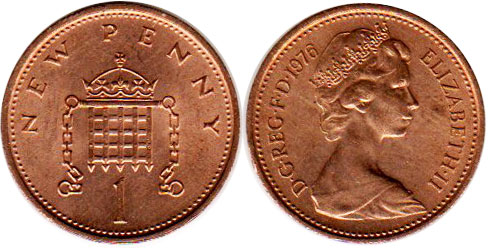
1 new Penny 1971-1981 of Elizabeth II
Since 1982, the “new” addition has been removed.
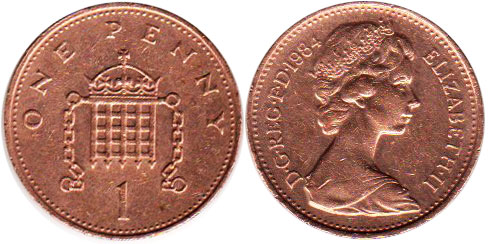
Penny 1982-1984 of Elizabeth II
Since 1992, penny have been minted from steel coated with copper. To maintain the weight and diameter of the coins, they were made somewhat thicker.
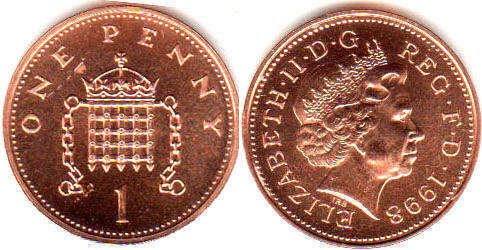
Penny 1998-2008 of Elizabeth II
In 2008, the reverse design was changed. It now represents part of the coat of arms (central left) of the United Kingdom.
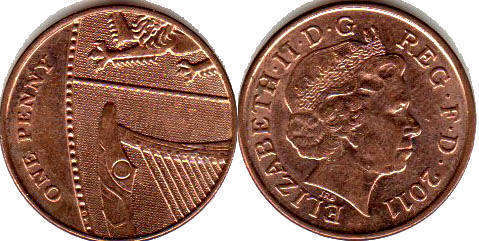
The penny is still minted in this form.
1/2 (half) Penny
The 1/2 penny coins were minted of the same type as the 1 penny, but weighed half as much.
But since 1936 their design began to differ. The Geog VI and Elizabeth 2 halfpennies (before the changeover to the decimal system) depict the schooner Bluenose, a multiple winner of the International Fishing Race.
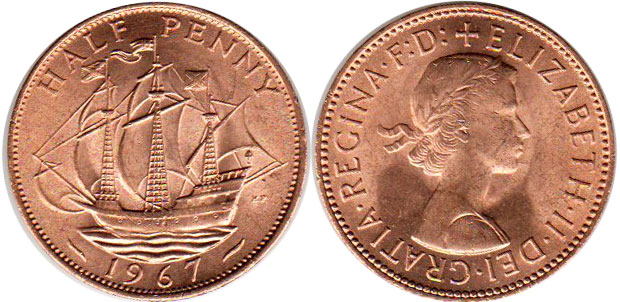
1/2 penny 1954-1967 of Elizabeth II
The 1/2 new penny and half penny 1982-1984 coins feature the royal crown.
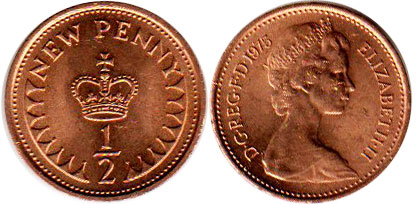
1/2 new penny 1968-1981 of Elizabeth II
After 1984, halfpenny coins were no longer minted.

